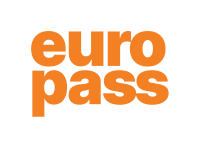
Teaching European Identity: a Cultural Heritage Approach
Participants will learn how to introduce the concept of European identity at school using cultural heritage education. By accessing the historical archives of the European Union, they will discover an infinite heritage of stories that engage learners with personal motivation and present the flow of historical events that united Europeans.
Description
This course is available in: Florence--> Read the full course description and tentative schedule <--
What does being European mean today?
How to introduce the concept of European identity at school?
How to familiarize pupils and students with the European Union and its Institutions?
Cultural heritage education offers effective strategies for answering these questions. And historical archives - such as the Historical Archives of the European Union (HAEU) in Florence, where this course takes place - are the best sites to learn about it.
Exploiting the methods and strategies of cultural heritage education, the HAEU archives become - from a place of storage and collection of documents - an open space for discussion, a place in which to discover an infinite heritage of stories.
Accessing the historical and cultural heritage preserved at HAEU allows reconstructing the history of the process of European integration on a double track: that of official history linked to the main events of European history, and that of personal history linked to men and women whose choices and initiatives played a decisive role within this process.
Merging individual and European history, school activities supported by archival sources have the double merit of engaging school learners with personal motivation and presenting the flow of the historical events that united all of us.
The course will instruct schoolteachers at all levels of education to use cultural heritage education in their classrooms to transmit the values of European citizenship to the younger generation.
Participants will engage in in-depth thematic moments, meetings, discussions, workshops, and practical activities designed to build a common consciousness, based on ...read more.
Learning objectives
The course will help the participants to:
Explain the historical process of European Union integration through engaging and innovative activities;
Use archival sources for educational design on European citizenship;
Have a better understanding of EU institutions and how they work;
Raise awareness of the impact of the EU on the daily lives of its citizens;
Promote common European values and heritage;
Promote a collaborative and supportive attitude in a multicultural environment.
--> Download all course info in PDF <--
Methodology & assessment
Certification details
Here's how we ensure your achievements are recognized and validated:
Certificate of Attendance: Upon successful completion of your course, you will receive a Certificate of Attendance in line with Erasmus quality standards.
Europass Mobility Certificate: If requested, you can also receive the Europass Mobility Certificate.
Seamless Administration: We provide assistance and guidance to our participants throughout every step of the project: from the grant application to the final documents.
To make your participation accessible, our courses are designed to allow you to request 8 days of individual support for your subsistence costs. This includes 6 days for the course and an additional 2 days for travel.
Useful resources:
Live Chat support: Monday-Friday | 8:30-22:30 CET
FAQ
Guides to Erasmus+
OID Numbers and Fiscal Data
A 60 € late registration fee will be applied if you register less than 8 weeks before the course start date.
Pricing, packages and other information
-
Price:480Euro
Additional information
-
Language:English
-
Target audience ISCED:Primary education (ISCED 1)Lower secondary education (ISCED 2)Upper secondary education (ISCED 3)
-
Target audience type:TeacherHead Teacher / PrincipalGovernment / policy maker
-
Learning time:25 hours or more
Past sessions
More courses by this organiser

Successful Strategies for Teaching Students with Special Needs in Every Classroom

Photo and Video Making in your Classroom: The Educational Power of Multimedia


